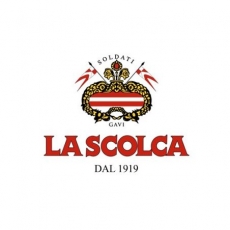Region: Piemonte

All grapes have a place where they give the best of themselves.
They are able to express their full potential only in a place where the vine finds the proper soil, climate, altitude,
and exposure: only there and nowhere else.
The Cortese grapes, for example, in the Gavi region, near Novi Ligure, result in a wine with an aristocratic personality – basic and intense, durable and elegant; and, within the borders of the small municipality of Gavi, the best results are obtained in the Rovereto district. If we classify the region as is done in France, Rovereto di Gavi would be, without any doubt, the “Grand Cru” of the Cortese grape.
La Scolca has its vineyards in the most beautiful locations in Rovereto, and its “Gavi dei Gavi”® represents the very best of the wine the can be found in this microarea. But this exciting result does not come exclusively because of the fortunate position of our vineyards: it is also the fruit of well-considered enological practice. With raw materials and conditions similar to other producers in the area, our expertise permits us to always be one step ahead.
The Gavi wine made from the Cortese grape was actually invented here at La Scolca in the 1950s. It has since become a classic.
The Company manages an area of about 50 hectares of vineyards, consisting of about 200 km. of rows of vines. During a single crop season, these rows are visited from eight to ten times, on foot or by tractor. The distance from plant to plant ranges from 90 cm to 2.4 metres. The density is about 4500 vines per hectare. All the vineyards are in the best sites of Rovereto di Gavi. Sea air, full sunlight exposure from sunrise to sunset, coolness and minimal dews. All of these elements create the proper alternating conditions that are ideal for a complete and correct ripening of the grapes, a prerequisite for a good wine.
The company always follows the same principle: a great wine is born in the vineyard, and it is there that we must primarily conduct the most careful and scrupulous work. By pruning, thinning and, if necessary, “harvesting green” we have a limited annual yield, less than the DOCG (Denominazione di Origine Controllata e Garantita) rules specify as the maximum production.